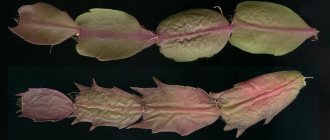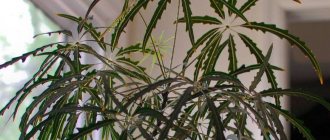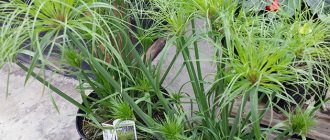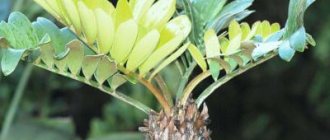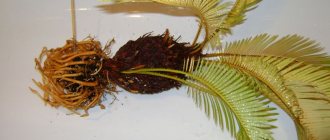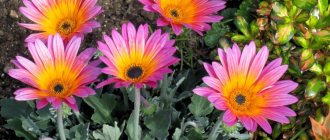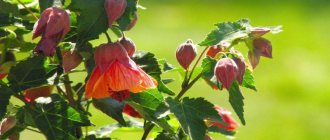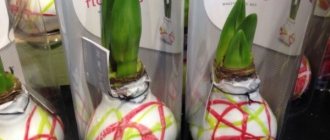Is Blue Agave a Cactus or Not?
Because of the plant's prickly leaves and sharp thorns, many people believe that agave is a cactus. But that's not true. Blue agave - what is it? The plant is one of more than 300 species of agave. It belongs to the genus Evergreen stemless of the Agave family. It has nothing to do with cacti or aloe, which agave is very similar to.
Blue agave
On a note! In addition to blue agave, American, striped and Yellow agave are also used for home cultivation. They differ in the shape and color of the leaves.
Brief description of what the flower looks like
Under natural conditions, blue agave is grown in Mexico. This is a large plant with elongated arrow-shaped fleshy leaves up to 2 m long. After 5 years, the agave produces a peduncle 5-10 m high, at the end of which beautiful bright yellow flowers bloom. They are pollinated at night by local bats. After flowering, several thousand seeds are formed, and the plant itself dies.
To obtain tequila, the plant is required to be 8-12 years old, so locals cut down the flower stalks, preventing them from growing and blooming, in order to preserve the strength of the agave for further growth. The cut shoots are immediately stuck into the ground, and a new flower grows from them.
At home, the crop grows smaller, but not much – the length of the leaves can reach 1 meter. The edges of the leaves are covered with spines, and at the tip of the leaf there is a long and sharp needle. Therefore, the place where the pot will be located must be spacious and protected from children and animals. The hard needle at the end of the sheet is cut off for safety reasons. This does not harm the plant. Agava blue leaves are thick and succulent, covered with a waxy coating of smoky blue color.
Uses of blue agave
Otherwise, blue agave is called tequila lily (Agáve tequilána), because the famous drink is produced from this plant. To make Mexican vodka, agave is grown for 12 years. Only the middle from which the leaves grow is suitable for use, but this compaction can weigh up to 90 kg. All other parts (leaves, roots and peduncles) are cut off, and the core is sent for processing to produce tequila.
On a note! Agave leaves contain substances that increase the effectiveness of medications. They are used to make drugs that stimulate metabolic processes, normalize metabolism and reduce intoxication. In cosmetology, the juice and pulp of the leaves are used as components of creams and lotions. Agave fibers are also used to make textiles, fishing nets, ropes and even ropes.
Use of the plant
Blue Mexican succulent is used in various areas of human activity:
- cooking - leaves and flowers are used as food, sweet and healthy syrups are made from the juice;
- industry - fibers are raw materials for thick ropes, fabric and shoes;
- dried leaves can be used as firewood for heating;
- pharmaceuticals - agave is an ingredient for many preparations for external and internal use;
- cosmetology - production of creams and lotions for skin care.
Caring for blue agave at home
Agave, plant - what it is and how it blooms
Blue agave grows in dry, hot climates, at altitudes of more than 1500 m, so when growing at home you will need to create a favorable climate for it.
Illumination and temperature conditions
The flower is light-loving and requires long daylight hours, and in the spring-autumn period, when there is not enough sun, it needs additional lighting. In this case, direct sunlight is not necessary. In the summer, if possible, the flower is taken outside, into the garden or onto the balcony.
Home flower requires long-term lighting
No heat can scare the succulent fruit; it is a heat-loving plant. In winter, the flower should be kept in a winter garden or on a veranda with an air temperature of +10... +12 degrees. At the same time, it needs lighting for at least 16 hours.
Watering rules and humidity
The plant needs dry, warm air. It does not need spraying; on the contrary, if moisture gets into the rosette of leaves, the plant may get sick. To remove dust, wipe the leaves with a damp sponge. The flower will not refuse ventilation and it is not afraid of drafts either.
You need to water the agave as the earthen clod dries out. Due to increased soil or air humidity, the agave rots and dies. In winter, the plant should be watered moderately, once a month. Water for irrigation is taken from settled or melted water, and always at room temperature.
Fertilizing and soil quality
The plant is undemanding to the soil, since under natural conditions agave grows in clay-sandy soils and feels great. The most important thing is to pour good drainage into the pot so that the moisture does not stagnate. Any material is suitable for this (expanded clay, crushed stone, broken brick and even crushed foam).
Note! Agave prefers highly alkaline soil. Usually a mixture of garden soil, coarse sand and peat is poured into the pot.
As a top dressing, you can use universal fertilizer for succulents, but it must be used not according to the instructions, but diluted at least 2 times. The plant needs feeding only in the summer, during the growth period. Fertilize it no more than 2-3 times a month.
You can feed it with fertilizer for succulents
Other types of agaves that can also be grown at home
- Agave avellanidens, Agava avellanidens , is a fairly large species with a rosette of light-gray leaves with dark spines.
- Agava guttata is a species with an unusual leopard print pattern on its relatively narrow leaves.
- Agave double-flowered, Agave geminiflora or agave with two flowers - a medium-sized agave with thin leaves that can grow up to 200 pieces!
- Agave potatorum, Agava potatorum, or Agave DRINKERS is a large plant (from 0.3 to 1 m in diameter) with rather wide leaves covered with a silvery waxy coating.
Agava potatorum
- Agave dwarf, Agava pumila , is a miniature species of agave that retains its juvenile form for 10 years, with a rosette only 5–8 cm in diameter.
- Agave titanota is a medium-sized agave, up to 0.5-0.6 m in height, with bluish wide leaves, up to 12 cm!
- Agave tight Nana, Agava stricta Nana - agave with narrow, straight, light yellowish-green leaves.
- Agave Utah, Agava utahensis , is a miniature type of agave, the size of the rosette does not exceed 40 cm in diameter. The leaves are straight, with curved teeth along the edges and decorated with long terminal spines.
Blue or textile Agave, Agave tequilana is the most famous type of Agave. Up to 5 m high. Leaves are light green, bluish. Used for the production of Tequila.
Agave Kissho Kan, KishoKan - variegated agave with a small neat rosette
Flowering and dormant period of perennial
Agave - what kind of houseplant is it?
Agave cactus blooms at home very rarely, almost never. The flowering of a succulent can only be seen in botanical gardens, where this event also does not occur often. Indoor agave can bloom even after 15-20 years of life. After flowering, it slowly dies, leaving thousands of seeds. But the flower is very impressive in the form of a tall panicle covered with bright yellow, funnel-shaped flowers.
The bloom is as powerful as the plant
Agave's dormant period begins in winter, when it needs low temperatures, rare watering (once a month) and no fertilizer. Only the lighting cannot be reduced at this time, without necessarily adding artificial light.
Transplantation and propagation
The flower is replanted in the spring. For young plants up to 3 years old, annual replanting is recommended, and for older plants - once every few years, as the pot becomes too small for the plant.
Children that are rooted directly into the soil are suitable for propagation. The first watering of the planted sprout is carried out after a few days. It is important to prevent the shoot from flooding, as this will inevitably lead to rotting.
Reproduction of Mexican agave
What are gerbera flowers - what they look like and how they grow
Growing blue Mexican agave at home is not difficult. Several methods are used for this.
Seeds
Succulent seeds have excellent germination rate. They can be sown at any time of the year, but the optimal period is from late February to early March. To grow a seedling from seeds you need:
- Prepare a container with a lid and fill it with peat-sand mixture.
- Sow the seeds to a depth of 0.5 cm.
- Provide a stable temperature for seedlings - +22... +25 degrees.
- The container with the fragile sprouts that appeared after a week should be ventilated daily.
After 3 weeks, the first leaf will appear on the sprout, and after another 3 weeks, the second one will appear. After about 3.5–4 months, the seedling will have 3-4 leaves up to 4 cm in length and developed lateral roots, then it can be transplanted into a new pot.
Germination of seeds
Children
The simplest method of reproduction is by children. Agave releases them every year.
The mother plant is removed from the pot, the daughter shoots are carefully separated and left for 2-3 hours. The cut must dry out, otherwise it may rot without taking root. At this time, the mother plant is returned to the pot. Children are planted in soil or wet sand and left there for 3 days. After this, the seedling can be watered.
Agave babies
Babies can be deposited at any warm time of the year. At first, it is not recommended to expose the pot with the seedling to the sun; the optimal place is a window facing east.
Leaf
Agave can be propagated by leaf in the same way. The leaf is broken off at the base and left to dry. You can sprinkle it with ash. After 2-3 hours, the leaf is inserted into the soil, where in 2-3 weeks it will sprout the first roots. In water, agave leaves do not develop roots; from excess moisture they begin to rot.
Peduncle
Under natural conditions, on agave plantations, the plant is propagated by flower stalks, cutting down the palm tree at the base and sticking it immediately into the ground. Since at home the flower almost never produces flower stalks, so it is better to use the methods described above.
Beneficial features
In its natural and prepared form, agave is a natural source of useful minerals such as iron, calcium, zinc, potassium, magnesium, phosphorus, copper, etc. These substances are in an accessible, easily digestible form and can significantly replenish the deficiency of macro- and microelements in the body person.
Agave plants are rich in vitamins, especially groups B and C, as well as K, which plays an important role in hematopoiesis. And an even bigger advantage of using agave in food is its low calorie content - only 135 cal per 100 g of product, which allows you to safely use it in dietary dishes. The main share of calories comes from carbohydrates, some of which are simple (in particular sugars), but mostly complex - dietary fiber and pectins.
Taken together, the benefits of the plant for human health are invaluable, which explains the increased interest in the southern beauty.
screenshot_7.jpg
Growing problems, diseases and pests
Despite the fact that blue agave is an unpretentious plant and tolerates any conditions except excess moisture, some problems may still arise when growing it at home:
- The plant is frozen and not growing. Perhaps the plant does not have enough space or the soil is not suitable for it. Try replacing the pot with another, larger one, filling it with suitable soil and moving it to a larger room.
- The leaves became small and the plant became elongated. This means that the agave is not getting enough light. It is necessary to install additional lighting using a fluorescent lamp.
- The stem or root has begun to rot. If this happens in winter, the plant is cold, or the humidity of the air and soil is increased. Exhaustion can also occur due to too high temperatures during wintering. It is necessary to stop watering and move the agave to a dry room with a temperature of +8... +10 degrees. In summer, rotting is possible when the soil is waterlogged due to lack of drainage. In this case, the plant is transplanted into another pot with special holes, filled with drainage 1/3 and the watering regime is observed.
Diseases and pests
Blue agave has low immunity to fungal diseases and pests. If there is excess moisture, the flower immediately begins to rot; both the leaves and the root system become covered with brown and black spots.
Pest infestation
Among the pests that attack the agave cactus, weevil larvae, as well as scale insects and thrips, cause particular harm. The plant needs to create favorable conditions, control the humidity in the room and soil in the pot, and check the condition of the flower. If signs of disease or pests are detected, the agave is transplanted into disinfected soil, pre-treated with insecticides and fungicides.
Blue agave is an exotic, powerful plant that does not require special care. The only difficulty may be creating conditions for wintering, when the plant requires low indoor temperatures, but also needs long daylight hours. Agave is very easy to propagate, so you can quickly create your own Mexican corner.

